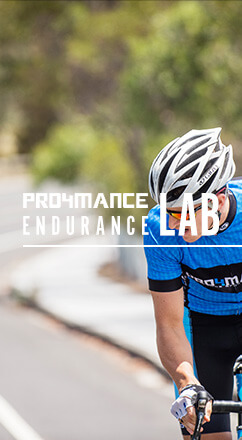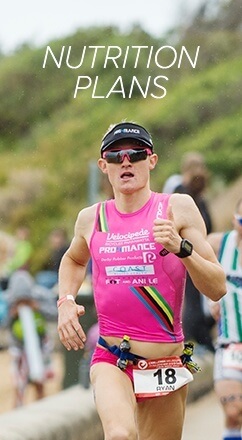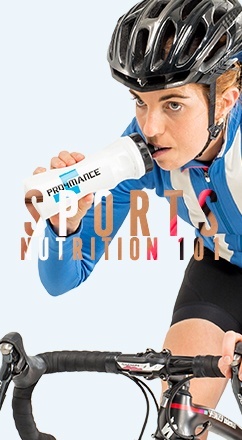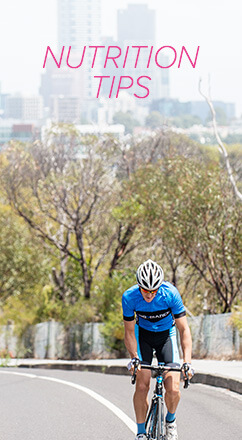[tabs style=”vertical” id=”partners”] [tab title=”Foam Roller Training Tips”]
FOAM ROLLER TRAINING TIPS

Foam Rollers are a fantastic tool to athletes rehabilitate, warm up and massage their muscles. You can use a foam roller on the major muscle in your body to help relax, lengthen and improve fluid movement. Here are some training tips on how to use a foam roller.
Calves
Put the roller under a calf. Rest your other foot on the floor or on top of the other foot in increase the pressure. Roll from the ankle to the back of the knee. Rotate the leg in, then out to ensure you work the entire muscle
Hamstrings
Place the roller under your thighs. Roll from the knees to the buttocks. To increase the pressure, put one leg on top of the other leg and roll one leg at a time, make sure you rotate the leg in and out to work the entire muscle
Buttocks
Lay straight and rotate your body on a 45° and put the roller under your buttocks closes to the ground and roll backwards to forwards localising the movement to your buttocks. To be more specific sit on the roller and place one foot on the opposite knee. Roll backwards and forwards while leaning into one buttocks using your other leg to control the pressure.
Iliotibial Bands
Lie straight and on your side (90°) with the roller in the middle of your thigh, use your other leg for support and to control the pressure. Roll up and down along the your outer thigh. You can increase the pressure by place your support leg onto the other leg.
Qaudriceps
Lie on your stomach with a roller placed under the front of your thigh and slowly roll up and down from the top of your knee to the top of your thigh. To increase the pressure place once leg on the other and roll one leg at a time.
Adductors
Lie on your stomach with one leg rotated slightly to the inside and bend your knee. Place the roller on your inner thigh of the rotated leg and roll up and down the inner thigh.[/tab][tab title=”train your stomach”]
TRAIN YOUR STOMACH
Consuming 90g of Carbohydrates per hour can be very difficult for some untrained athletes. For this reason we recommend you train your stomach. Follow this simple 10 week training program below to help train your stomach to absorb 90g of Carbohydrates per hour.
Week 0-2: consume 60g (2 servings) per hour during every hour of training
Week 3-4 : consume 60g and 75g alternatively per hour during every hour of training
– (first hour – 60g, second hour – 75g, third hour – 60g etc.)
Week 5-6 : consume 75g (2.5 servings)per hour during every hour of training
Week 7-8 : consume 75g and 90g alternatively per hour during every hour of training
– (first hour – 75g, second hour 90g, third hour 75g etc.)
Week 9-10 : consume 90g (3 servings) per hour during every hour of training
You are now ready to consume 90g (3 servings) per hour every hour of competition.
[/tab] [tab title=”training with limited bottles”]
TRAINING WITH LIMITED BOTTLES
When you are going for a long ride and you have a limited amount of water bottles,
you can have difficulty fuelling and hydrating yourself. Here are some training tips some
of our Pro’s have told us about how to solve this problem.
Concentrated Bottle:
Combine 3-4 hours of Produrance into one bottle. This will make the bottle
highly concreted but what it allows you to do is slowly sip on the concentrated
bottle throughout the ride while using another bottle which is full of water to
wash the concentrated bottle down. When you stop you can easily refill the
water bottle and continue to ride without having to measure and mix another
bottle of Produrance.
Use Produrance Energy Gels:
1 Produrance Gel is equivalent to 1 serve of Produrance. Consuming between 1-3
Produrance Energy Gels per hour depending on your energy/electrolyte demands
will give you all your required nutrition while allowing you to drink water
throughout your ride. You can quickly and easily fill your bottles up when you
stop and then start riding again.
Carry Produrance in a small container:
Depending if you use 1, 2 or 3 serves per hour of Produrance. You should pre
measure the quantity you require into small containers which you can quickly
pour and mix into your water bottle when you stop to refill.
Carry Extra Bottles:
You can purchase bottle holders that attach onto your seat post/saddle which
allow you to carry an extra 2 bottles. This is greater for long ride when you
don’t have a chance to stop and refill bottles.
Use 800ml Bottles:
If you know you are going to a long ride you should use 800ml bottles instead
of 650ml bottles. This will allow you to carry a greater amount of water and
continue to hydrate yourself for longer.[/tab] [tab title=”static stretching”]
STATIC STRETCHING
Static Stretching is an important part or any physical exercise wether you are just exercising or you are training for a specific event/competition. There are two major types of stretching, Static and Dynamic. Static Stretching has many benefits including:
Flexibility
Stretching Increases the flexibility of a muscle, or its ability to lengthen. Increased flexibility improves muscles length and joint range of motion, allowing joints to move throughout their entire range, reducing load on a joint and providing improved performance.
Injury Prevention
Majority of muscle injuries occur during the eccentric phase of a muscle contraction (when a muscle is having to contraction while lengthening). This places the greatest amount of tensile load on the muscle. If a muscle is not flexible then the potential for serious injury is increased. Stretching increased the length of muscles and allows the muscle to prevent injury while under eccentric load.
Power Generation
Stretching allows a muscle to generate a greater amount of power. This occurs due to optimal actin and myosin cross over that occurs when a muscle has been stretched and is at the optimal length. Generating more power will allow athletes to improve their performance.
Muscular Endurance
Muscle Endurance is limited when muscles cannot work efficiently while under demand. Stretching allows muscles to lengthen and function to optimal levels allowing them work for longer durations.
Dyanamic Stretching is important before exercise and competition for increased performance however Static Stretching is just as important, but should not be solely used before exercise. It is important to you use Static stretching, before, after and throughout the day to ensure your muscles are at their optimal length.
Examples of Static Stretching:
Calves
Hamstrings
Quadriceps
Hip Flexors
Gluteals
Lower Back
Lats
Rotator Cuff
Trapezius [/tab] [tab title=”How to Mix Your Drink Correctly”]
HOW TO MIX YOUR DRINK CORRECTLY
Fill your bottle halve way with water then add the required amount of powder.
Close the lid tightly and shake vigorously for 30 seconds. Turn your bottle up
and down a few times then shake vigorously for another 30 seconds. Open the lid
and fill your bottle to the top with water. The powder will now have completely
dissolved into the water without any clumps. Close the lid tightly again and
now it is ready to drink.
[/tab] [tab title=”7 tips to recover following a race”]
7 tips to recovery better following a race
Consume carbohydrate within 15 minutes of finishing:
Consuming carbohydrates within 15 minutes following the race improves muscle glycogen storage compared to waiting several hours. This occurs as muscle glucose uptake is fasters directly after exercise due to an increase in muscle insulin sensitivity and membrane glucose transporter. This means you will be able to replace the glycogen stores you used during the race quicker and optimize your recovery.
Replace the fluid you have lost during the race:
You should weigh yourself before the race and then weigh yourself after the race wearing the exact same clothing. The difference between your pre and post weight should be converted from kg’s to L’s and should be replaced at 125-150%. For example, if you weigh 72kg before the race and your weigh 70kg after the race then you have lost 2kg. This means you need to drink 3L (2L x150%) to ensure optimal rehydration. Always rehydrate with an electrolyte rich drink not just water.
Stretch your muscles after the race:
Stretching your muscles after the race helps to maintain muscle flexibility and length while improving the blood flow through the muscle which improves initial muscle recovery and prevent muscle damage in subsequent training.
Have a Ice Bath:
The ice cold water in the bath will cause the blood vessels in the muscle to tighten and drain all the blood out of the muscles. Once you get out of the ice bath, new highly oxygenated blood rushes into the blood vessels replenishing the muscles with oxygen and nutrients vital for muscle recovery and repair.
Go for a walk 2 hours after the race:
Going for a walk 2 hours after the race helps to optimise the blood flow through the muscles which aids the removal of lactic acid that has accumulation from after the race, improves muscle flexibility and stimulated new highly oxygenated blood flow into the muscles.
Avoid using Anti Inflammatories:
Using Anti Inflammatories directly after a race, prevents the inflammatory process which is vital in the initial stages of recovery. Preventing this process slows the healing of muscles, ligaments, tendons and bones and ultimately slows overall recovery.
Sleep in your compression tights:
Compression garments were originally designed for muscle recovery but are now used before, during and after activity. Sleeping in your compression tights optimises circulation in your legs which improves blood flow and muscle recovery.
[/tab] [tab title=”5 tips to prevent shin pain”]
5 tips to prevent shin pain
Shin pain or antero-medial tibial pain can result from a number of factors and can
lead to more serious injuries such as medial tibial stress syndrome,
compartment syndrome or stress fractures. The major culprit of initial shin
pain is the Tibialis Posterior. Here are 5 great tips to help prevent the onset
of shin pain.
Wear supportive footwear during the day:
Athletes with shin pain focus on their footwear while they are running, however
the majority of damage occurs during the day when they are wearing unsupported shoes.
Due to the lack of support of the medial aspect of the foot the dynamic
stabilises of the foot need to work harder. This extra strain on the muscles
(Tibialis Posterior) will eventually leading to shin pain.
Stretch your calves:
Excessive tension in the calf muscles during exercise will reduce their ability
to contract and will cause the body to recruit other muscles in the lower limb
to help compensate. This compensation leads to increased strain on other
muscles especially the Tibialis Anterior and Posterior which can lead to shin
pain.
Massage under your foot:
The Plantar Fascia and the intrinsic muscles of your foot, play an important
role during the stance phase of running in maintaining the correct mid foot
posture. Under load the Plantar Fascia and intrinsic muscles help to maintain
the medial arch of the foot. When this arch collapses under load it causes
inversion of the mid foot and increases the strain on the Tibialis Posterior.
After repetitive strain the extra load on the Tibialis Posterior will lead to
shin pain. Rolling a hard ball or frozen drink bottle under the foot are great
ways to massage and loosen these muscles.
Gradually increase intensity and duration:
The majority of athletes who suffer from shin pain have had a change in their
running intensity and/or duration. It is vital that you gradually increase either
your intensity or duration and never both at the same time. The unaccustomed
excessive eccentric strain on the Tibialis Posterior will lead to the onset of
shin pain.
Don’t try to run them out
Some athletes believe they can run out shin pain. This is common believe
because initially they have pain while running then after a few minutes they no
longer feel any pain. Unfortunately you are not improving the condition and the
chances are you are going to aggravate the condition and prevent the early
recovery of the problem. If you start to suffer from shin pain, stop running,
correct all of the above and then gradually return to running after sufficient
rest.
If you continue to suffer from shin pain you should seek professional advice from
a qualified Osteopath, Physiotherapist or Podiatrist.
[/tab] [tab title=”Shoulder impingement in swimmers”]
Shoulder impingement in swimmers
What is shoulder impingement?
When the rotator cuff muscles (shoulder stabilising muscles) are trapped and compressed on movement through the subacromial space, most commonly on overhead movements. This can result in injury to the rotator cuff muscles and tendons (including partial or full thickness tears, calcific tendonitis, or tendinosis) as well as the to the bursa (bursitis), which then results in painful shoulder movements.
Cause of shoulder impingement
Most often, repetitive overhead movement into the impingement zone causes shoulder impingement eg. freestyle stroke in swimming, but it can also be caused by trauma, such as a fall.
Causes of shoulder impingement can be placed into two categories:
1. Structural narrowing:
This means there is narrowing of the subacromial space, due to a condition such as osteoarthritis, which can cause extra bone growth or bone spurs.
2. Dynamic Instability
This means there is instability in the shoulder including ligament laxity, excessive joint movement and/or muscle weakness. Any of these will mean the rotator cuff muscle of the shoulder must work harder to allow proper movement of the shoulder and as these become tired or overworked the muscles then begin to fail to prevent impingement through the shoulder.
What are the Shoulder Impingement Symptoms?
– pain when lifting your arm to shoulder height and/or above your head
– pain at the point of your shoulder, which can extend down to your elbow
– pain when lying on your shoulder
– pain when putting your hand behind your back
– feeling of weakness in your shoulder or pain when lifting
Ways to prevent shoulder impingement
– avoid repetitive above shoulder height movements
– ice shoulders after training
– complete rotator cuff exercises
– avoid heavy lifting
– make sure your swimming stoke is biomechanically correct
What should you do if you think you have shoulder impingement?
Make sure you see your healthcare professional such as your physiotherapist or osteopath as they will be able to give you specific advise regarding your injury. Shoulder impingement if not addressed correctly can result in serious injury so it is important to catch any symptoms early to reduce the potential for further injury.
How long will it take for me to recover from shoulder impingement?
Unfortunately there is no definite answer for this as every shoulder is different. Recovery time depends on the exact cause of your shoulder impingement, your response to treatment as well as your commitment to completing all exercises and self-management your physiotherapist or osteopath sets for you. Most often there is no ‘quick fix’ for shoulder impingement as rotator cuff strengthening can take months to perfect and progress.
[/tab] [tab title=”Achilles Tendinopathy”]
Achilles Tendinopathy
What is Achilles Tendinopathy/Tendinosis
Achilles Tendinopathy/Tendinosis is when the Achilles tendon or it’s covering becomes inflamed.
What are the causes of Achilles Tendinopathy
Most commonly Achilles tendinopathy is an overuse injury, caused by wear and tear over time. Although pain can come on suddenly, it normally gradually comes on and increases.
The most common cause is repetitive movements involving the tendon such as running and jumping. Other causes include sudden increase in training, changes to training surface, change in footwear, tight calf or hamstring muscles, wearing high heels, toe walking, poor footwear, hill walking and poor eccentric strength.
What are the Symptoms of Achilles Tendinopathy
-pain in the Achilles region
-pain at the start of exercise which can decrease as you continue to exercise
-pain on running and/or jumping
-pain when you first get up in the morning
-tender to touch and inflamed
-the tendon may sound ‘crunchy’ when touching or using the tendon
Ways to prevent Achilles Tendinopathy
-gentle stretching of your calves and hamstrings
-ice your Achilles after training
-make sure you wear good supportive footwear
-avoid wearing high heels
-perform eccentric strengthening exercises
-self massage to calf and hamstrings using your foam roller
What to do if you think you have Achilles Tendinopathy?
Make sure you see your healthcare professional such as your physiotherapist or osteopath as they will be able to give you specific advise regarding your injury. Achilles Tendinopathy if not addressed correctly can result in serious injury, such as a tear of the tendon or full rupture so it is important to catch any symptoms early to reduce the potential for further injury.
How long will it take for me to recover from Achilles Tendinopathy?
Unfortunately there is no definite answer for this as every case is different. Recovery time depends on the exact cause, length of time you have been suffering your pain, severity of the tendinopathy, your response to treatment as well as your commitment to completing all exercises and self-management your physiotherapist or osteopath sets for you. Most often there is no ‘quick fix’ for Achilles Tendinopathy so make sure you are patient and follow all professional advice.
[/tab] [tab title=””] [/tab] [tab title=””] [/tab][tab title=””] [/tab] [tab title=””] [/tab] [tab title=””] [/tab][tab title=””] [/tab] [tab title=””] [/tab] [tab title=””] [/tab][tab title=””] [/tab] [tab title=””] [/tab] [tab title=””] [/tab][tab title=””] [/tab] [tab title=””] [/tab] [tab title=””] [/tab][tab title=””] [/tab] [tab title=””] [/tab] [tab title=””] [/tab][/tabs]




